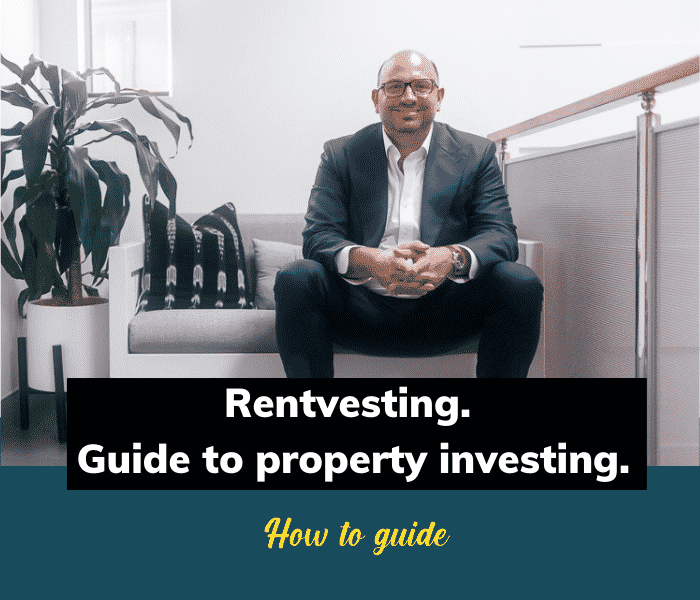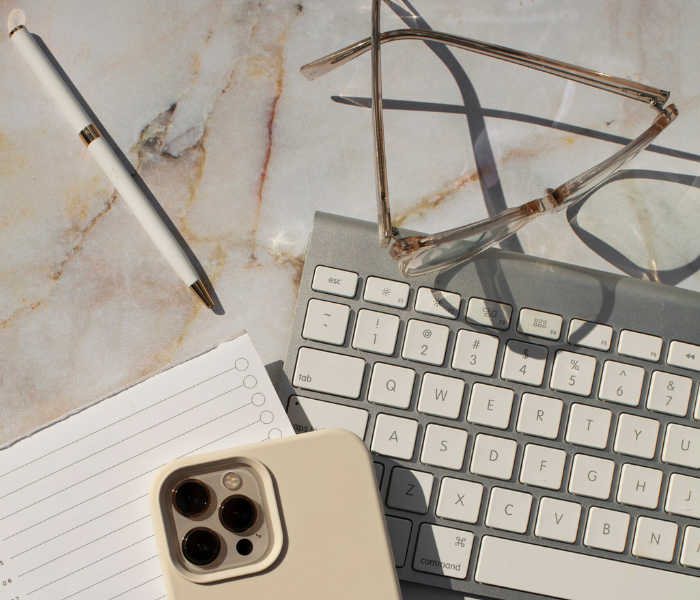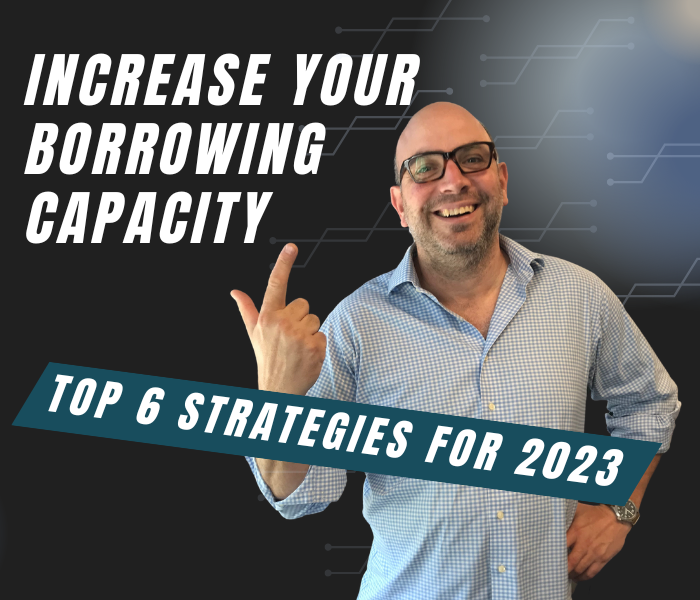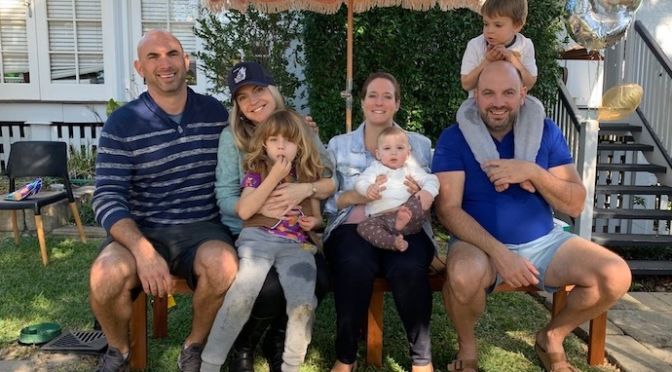What is rentvesting?
Rentvesting is a strategic approach to property investment where you buy an investment property while continuing to rent the home you live in. It’s an innovative solution for aspiring homeowners who can’t yet afford their dream home exactly where they want to live. Rentvesting has gained popularity as a way to enter the expensive Australian property market and gives buyers a way to make money to eventually spend on a property they’d like to live in.
The concept offers a blend of lifestyle flexibility and financial growth. By renting where you want to live and investing where it’s affordable, you can enjoy the lifestyle you want while still building equity in the property market. This approach is particularly appealing in major cities like Sydney and Melbourne, where property prices in popular lifestyle areas are often unattainable.
Rentvesting may be for you if:
You are currently renting or living with family and:
- Love where you live for the lifestyle (i.e., close to work, school, university, beach, and cafes)
- Can’t afford to buy a home in the area you want to live
- Can afford to buy a cheaper property elsewhere
Alternatively, it may suit you if:
- You want to purchase multiple investment properties over a few years to accelerate your wealth
- Are happy to continue renting or living with family
Alternatively it may suit you if:
- You want to purchase multiple investment properties over a few years to accelerate your wealth
- Are happy to continue renting or living with family
Benefits of Rentvesting:
- Enter the property market sooner
- Potential for capital growth and rental income
- Tax benefits from negative gearing and depreciation
- Maintain your current lifestyle while building wealth
- Diversify your investment portfolio across different locations
Considerations
- Managing tenants and property maintenance
- Potential for negative cash flow initially
- Missing out on First Home Owner Grant for your investment property
- Paying rent and mortgage simultaneously
In 2025, with property prices continuing to rise or at least staying very high in major Australian cities, rentvesting remains a viable strategy for many young professionals and investors. It allows for a more flexible approach to wealth creation, adapting to the changing dynamics of work, lifestyle preferences, and the property market.
Before embarking on a rentvesting strategy, it’s crucial to conduct thorough research, understand the property market trends, and consult with financial advisors like Blackk Mortgage Brokers Finance to ensure it aligns with your long-term financial goals and risk tolerance.
Now let’s get you on your way to property ownership and explore how to rentvest for ultimate success below.
What’s in this rentvesting guide?
Chapters
- What is rentvesting?
- How does rentvesting work?
- Is rentvesting right for me?
- Three main life stages that rentvest.
- Case study: Rent near the CBD and own an investment property in a regional area.
- Benefits of rentvesting.
- Downsides of rentvesting.
- What to consider when choosing an investment property for rentvesting.
- How much deposit do I need to get started rentvesting?
- Is rentvesting a good idea for me?
- Further reading.
How does rentvesting work?
First, let’s discuss why rentvesting became a popular property strategy. The main benefit is you can live where you enjoy the lifestyle, instead of just where you can afford. Usually the most sought-after areas, where young singles, couples and families want to live, have the highest property prices. In these areas, you may find that paying rent is easier than:
- Saving a large deposit to buy a property in the area, and /or:
- Paying off a mortgage where the repayment is more than the rent you pay.
So instead, some people choose to rent in the area they want to live in. Then by purchasing an investment property in a more affordable area, such as further out from the city or in a regional area, the investment property may be a source of cash flow positive rental income. In addition to this, over time a cleverly purchased investment property in the right location will grow your wealth through equity, as property prices increase. The ‘capital gains’ you can make while riding a growing market can then be used to buy your own home in the suburb you really want to live in. Or consider buying multiple investment properties using the rentvesting strategy. You may also like to read about:
- How to buy an investment property with no deposit saved
- Buying an investment property using the equity in your home
- First home owner grants for when buying a home to live in (not as an investment)
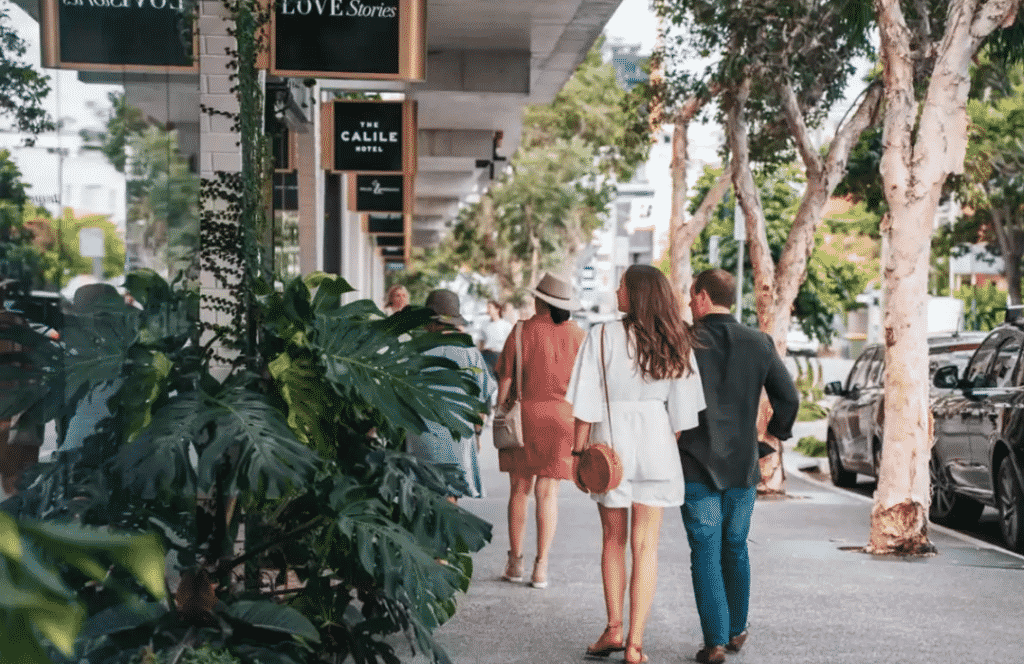
James Street in Brisbane, is a popular spot to live as it’s close to the CBD, cafes and shops, however house prices are rather expensive. For young singles and couples, it can be more affordable to rent in the area and buy an investment property elsewhere.
Is rentvesting right for me?
We have found there are a few common situations where rentvesting has been a popular property strategy clients. Can you relate?
Scenario #1. You are your partner are both professionals in your mid 20’s and enjoying living in the inner Brisbane CBD suburb of Newstead. Whilst you earn a good income between the two of you, it’s still not enough to by an apartment in the area so renting is the best option for now. However you still want to take advantage of your incomes now and buy an investment property. You want to buy a property which may become a family home down the track so you are considering either the northern suburbs of Brisbane or the Sunshine Coast. If you buy well, the property will increase in value over time will give you access to equity which can be used to buy a family home in the future.
Scenario #2 You are single and in your early 30’s, and are at the point in life where you want to start building your financial security for the future. You are currently living on the Gold Coast and are happy to stay there renting the unit you are in. After speaking with a mortgage broker, you know that on your current income and with your living expenses, your budget to buy an investment property is $500,000. You decide to buy a property, south of Brisbane, as an investment. The rental income from the property covers the mortgage, and in time, the capital gain from rising property prices may help you buy the home you want on the Gold Coast.
Three main life stage typically rentvest.
Do you fall into any of these?
Rentvesting Case study: Rent near CBD and own investment property in a regional area
We have a client, whose name is Madeline, who is currently renting in Kangaroo Point, close to Brisbane’s CBD, work, friends and family. As much as she’d love to own her own home in Kangaroo Point, properties in the area are around $1,000,000 and she does not have the income, deposit or borrowing capacity to afford this.
So instead, Madeline has opted to buy a 3 bedroom property in Townsville for $350,000, where house prices are considerably cheaper, and continue to rent in Brisbane. The Townsville property is rented out for $1,516 per month, which covers the mortgage repayment and expenses, with some cash left over each month to help pay the mortgage off even faster.
Down the track, Madeline hopes the value of the property will increase so she can either sell it or use the equity, as a deposit to buy her dream home near Kangaroo Point. Let’s go through the numbers so you can see how it may apply to you. Please note we have simplified this rentvesting strategy here to make it easy to understand the general concept.
Option A: Buying to live in:
- Madeline could purchase a property in Kangaroo Point for around $1,000,000
- The monthly mortgage repayment would be $3,369
- Need a minimum of a 7% deposit saved ($70,000)
Option B: – Rentvesting:
- Continue to rent a room in a shared house in Kangaroo Point at $600 per month; and
- Purchase an investment property in Townsville for $450,000
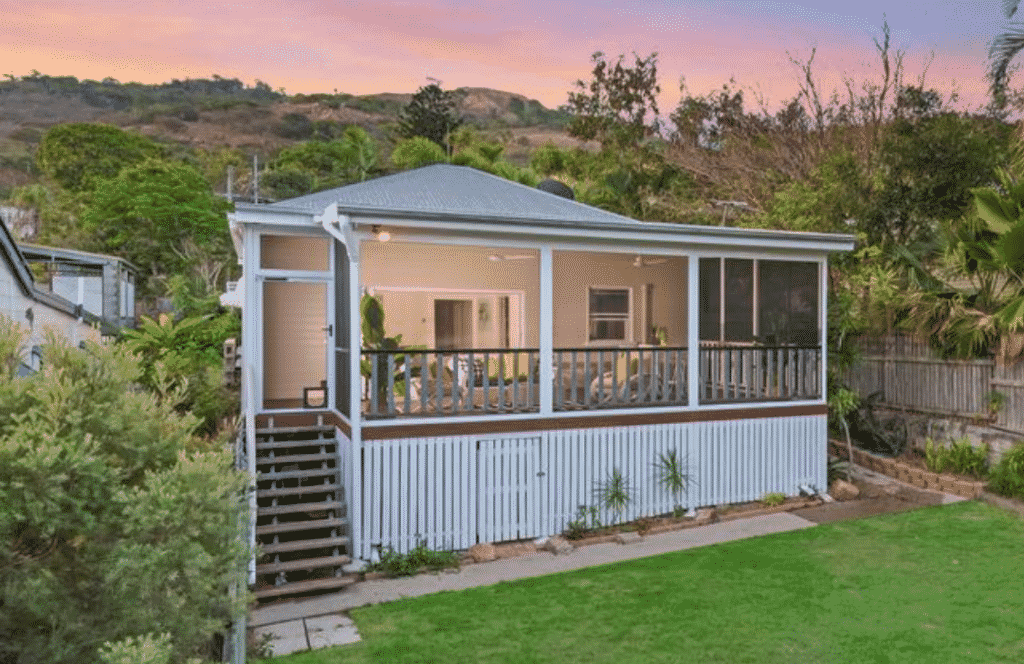
Rentvesting is popular with Millennials. Buy an investment property in a regional area where property prices are more affordable, like Townsville in far north Queensland. Then continue to rent in the area where you want to live in.
Why Rentvesting was the best option for our client
As Madeline is happy to continue renting, she is considerably better off with a rentvesting strategy at this stage in her life. Renting a room in a share house near the city gives her all the lifestyle aspects she wants. The Townsville property gives her an extra $300 per month in income (rental income less mortgage repayment). Madeline will put this income into the loan offset account to reduce her interest repayments which helps her pay off her mortgage sooner. At the same time, her investment property, should increase in value which will help her buy her dream home in years to come.
What are the benefits of rentvesting?
- Rent where you want to live rather than where you can afford
- Get into property investing sooner
- Benefit from rising property prices
- Forced savings for your dream home paying off principal and interest on your investment
- You can be more flexible renting if your life changes. For example we had clients who were transferred with work to three different locations in 5 years. It was far cheaper for them to rent and avoid additional costs and have the stability of their own investment property building their wealth.
- You can access tax benefits for your investment property
- Your tenants covering all or part of your mortgage repayments
- Your landlord covers the maintenance costs of the property you live in
Any reasons why rentvesting is bad?
- Uncertainty of renting
- Difficultly finding a rental property you like
- Your landlord has the control over the length of your lease and rent increases
- Buying costs are higher for investment properties v owner occupied
- The banks require a bigger deposit
- Interest rates are higher
- Buying costs like and stamp duty charges are higher
- No access to any of the first owner grant schemes
- Cost of maintaining an investment property
- Repairs and maintenance .
- Agent fees
- Repair costs
- Bad tenants or periods with an empty investment
- Capital Gains Tax!
- It’s important to do your homework and contact the ATO or your accountant to see what the implications and tax will be.
What to consider when choosing an investment property for rentvesting.
The type of investment property you purchase will depend on which of the following you want:
- Positive cash flow, and/or
- Capital growth
| Goal | Which means: | What to look for in a property |
| You want an investment property that has a positive cash flow | When the rent you earn from property is more than the mortgage repayment and expenses. | Look for properties with high rental yields. This is an ideal strategy as what it means is that it is self-sustaining and will generate enough income to cover all the expenses. |
| You want to buy an investment property for capital growth | Capital growth is the difference between what you paid for the home and what it is sold for or valued at. | Search for areas where demand exceeds supply so prices rise over time by buyers competing for areas they want to live in. |
Which of these goals is right for me? If you are not sure which of these approaches is right for you, consider which of the following is relevant for you:
- You want to buy your dream home in the future?
Then look to buy your investment property in an area with good capital growth potential. You could also look to make extra mortgage payments to add to your savings. Then as house prices increase, so does your equity in your home. In time, you may build up enough equity to use as a deposit to buy your dream home.
- You are planning on being a long term renter?
Look to purchase an investment property in an area which has the potential for good and increasing rental returns to ensure the mortgage and property costs are covered. Rentvesting works well for people who move around a lot for work or who just want to have an adventure and try out living in different cities. Renting is far more flexible and you’ll save on the transactional costs of buying and selling each time you move. People are more transient these days where as years ago people stay with the same employer and lived in the same area. Now days people finish school, travel, work overseas and can still buy an investment property not leaving it for 10 years to buy.
How much deposit do I need to get started rentvesting?
The general rule of thumb is that you need at least a 15% deposit to get started buying an investment property. The 15% minimum deposit amount is a requirement of the banks and lenders when you apply for an investment loan as they want to see you have saved some money yourself. The 15% deposit is made up of two parts:
- Deposit to secure the property of 12%
- Buying costs of 3%.
Buying costs include:
- Government stamp duty (if relevant), transfer fee and mortgage registration fees; and
- Costs that you pay as the buyer, including the solicitor/conveyancing fees and building and pest inspections.
Actually, there is a bit more to it with the science of deposits when buying an investment property, but this is a great basis to start with. If you are in planning mode wanting to get into rentvesting, then aim for a savings goal of 15%. If you are seriously looking to make some decisions about whether or not rentvesting is right for you, then please book a free 15 minute call with me and I can tell you exactly what you need to save. If you are not in a position to save a deposit, you may like this post here on how to buy an investment property with no deposit saved (link)
About Blackk Mortgage Brokers: The Rentvesting Experts
So is rentvesting a good idea for me?
Rentvesting isn’t necessarily the solution for everyone as different people are in different stages of their lives. Deciding if it is the right strategy for you will depend on your goals, personal circumstances and financial situation. Start by booking a free 15 minute call with me and we can assess your financial situation to see if rentvesting is the best property strategy for you.
You may also like to read about:
As leading mortgage brokers in Brisbane, Blackk Mortgage Brokers Finance can help you with all your property-related financial needs. See below for even more helpful links.
- How to buy an investment property with no deposit saved
- Buying an investment property using the equity in your home
- First home owner grants for when buying a home to live in (not as an investment)
About Blackk Mortgage Brokers: The Rentvesting Experts
As the founder of Blackk Mortgage Brokers in Brisbane, I’ve dedicated my career to transforming how Australians approach property financing. With over 15 years of experience in the mortgage industry, I established our firm to provide personalised, strategic financial guidance across Queensland. Our team specialises in crafting tailored mortgage solutions for first-time buyers, investors, and families throughout Brisbane, Gold Coast, and the Sunshine Coast.
We pride ourselves on our comprehensive approach, offering access to over 40 lenders and providing transparent, educational support throughout the loan process. My vision has always been to demystify mortgage complexity and empower clients to make confident financial decisions. Whether it’s home loans, investment properties, or refinancing, we’re committed to helping Australians build sustainable wealth through smart property strategies.
Our success stems from understanding each client’s unique financial journey and providing solutions that align with their long-term goals. Book a call today and let’s get started on your journey to financial freedom.


